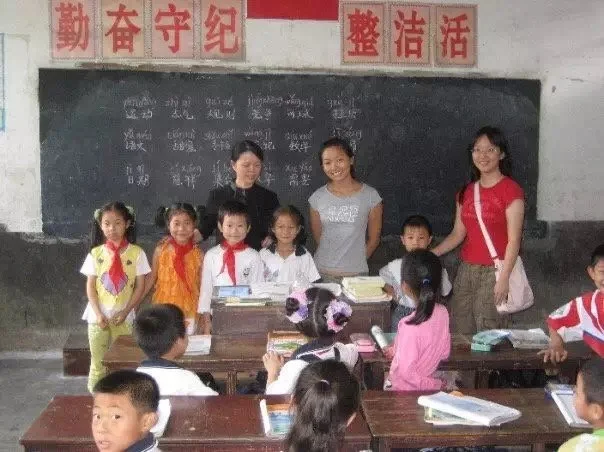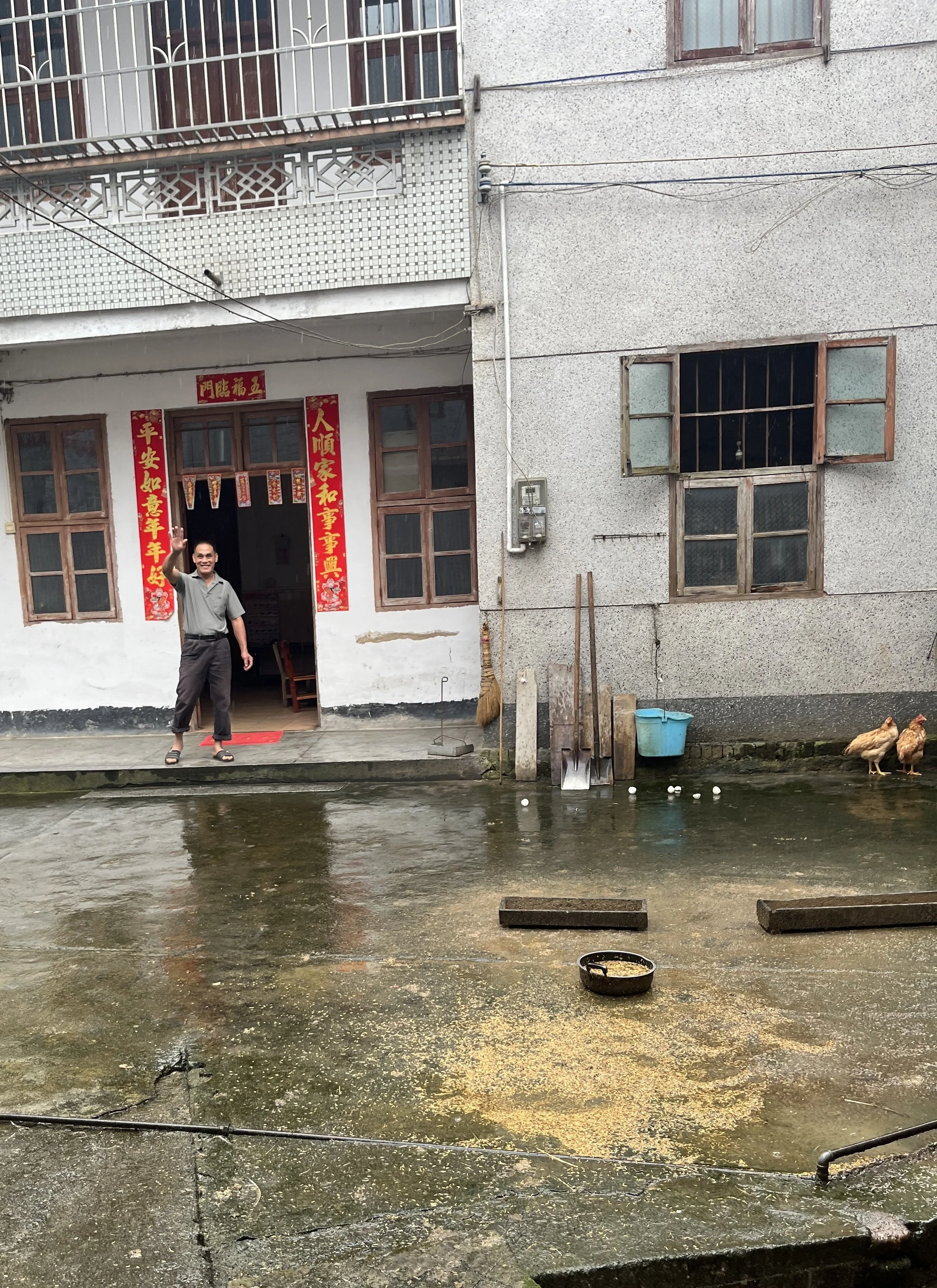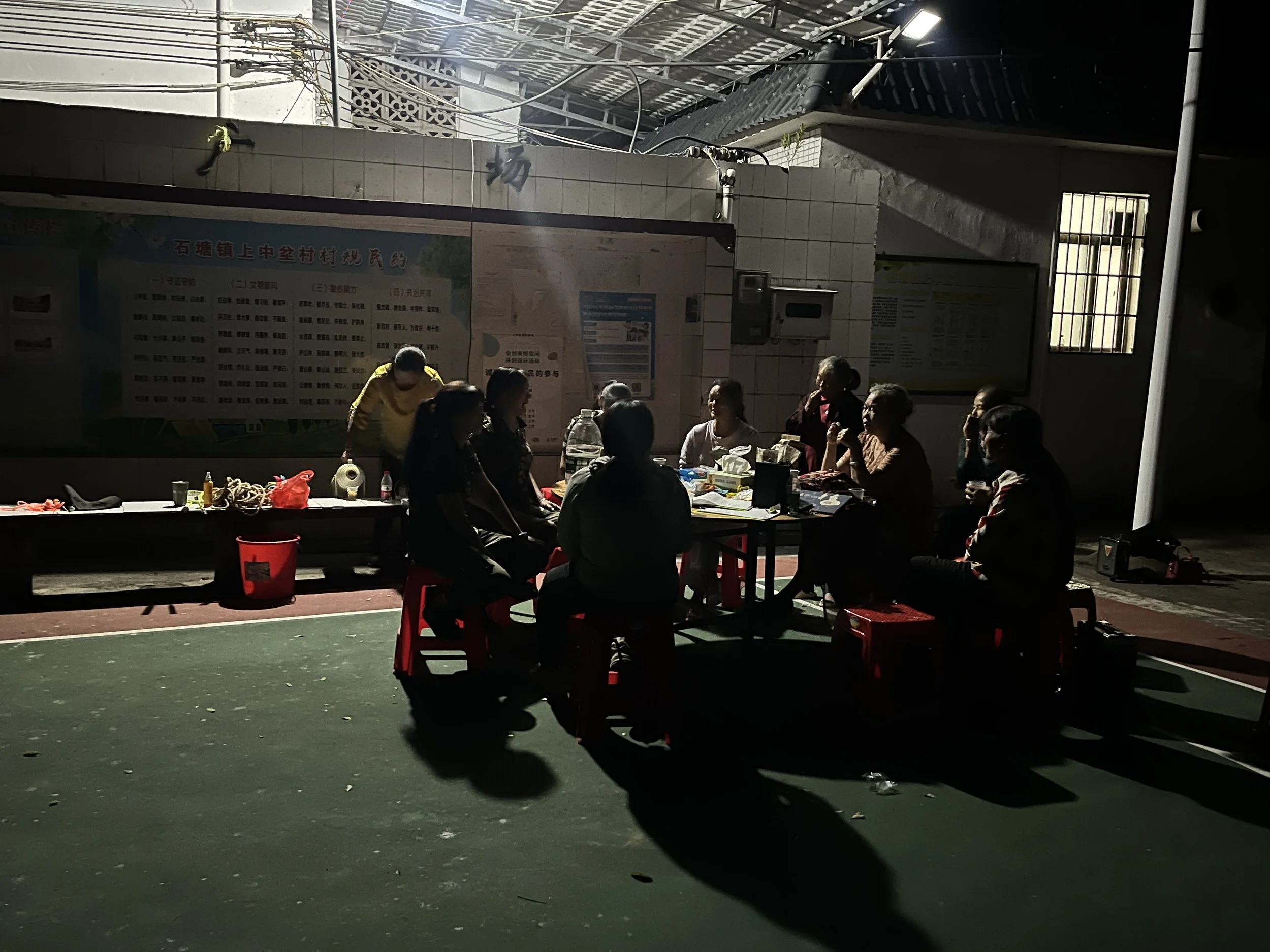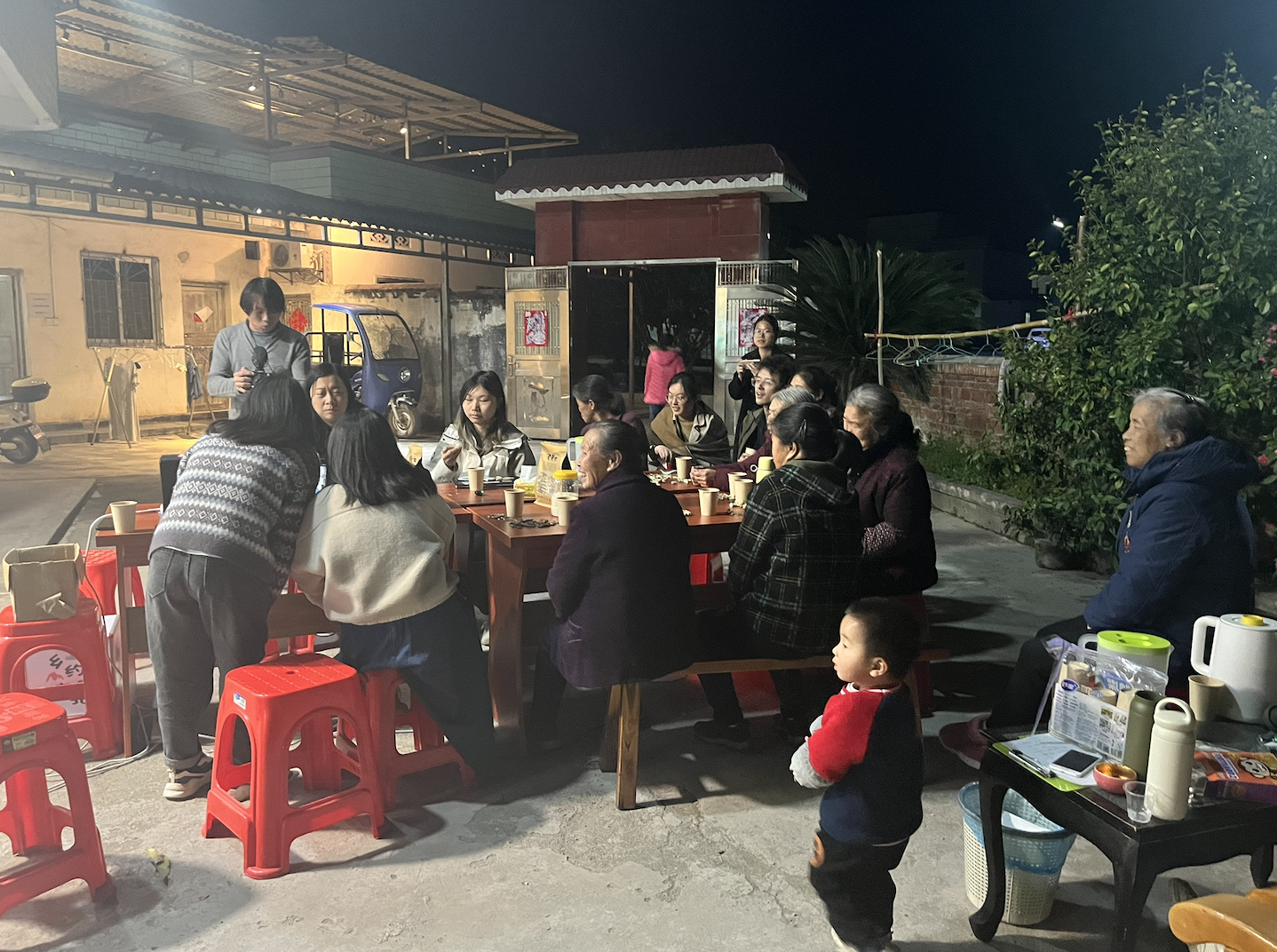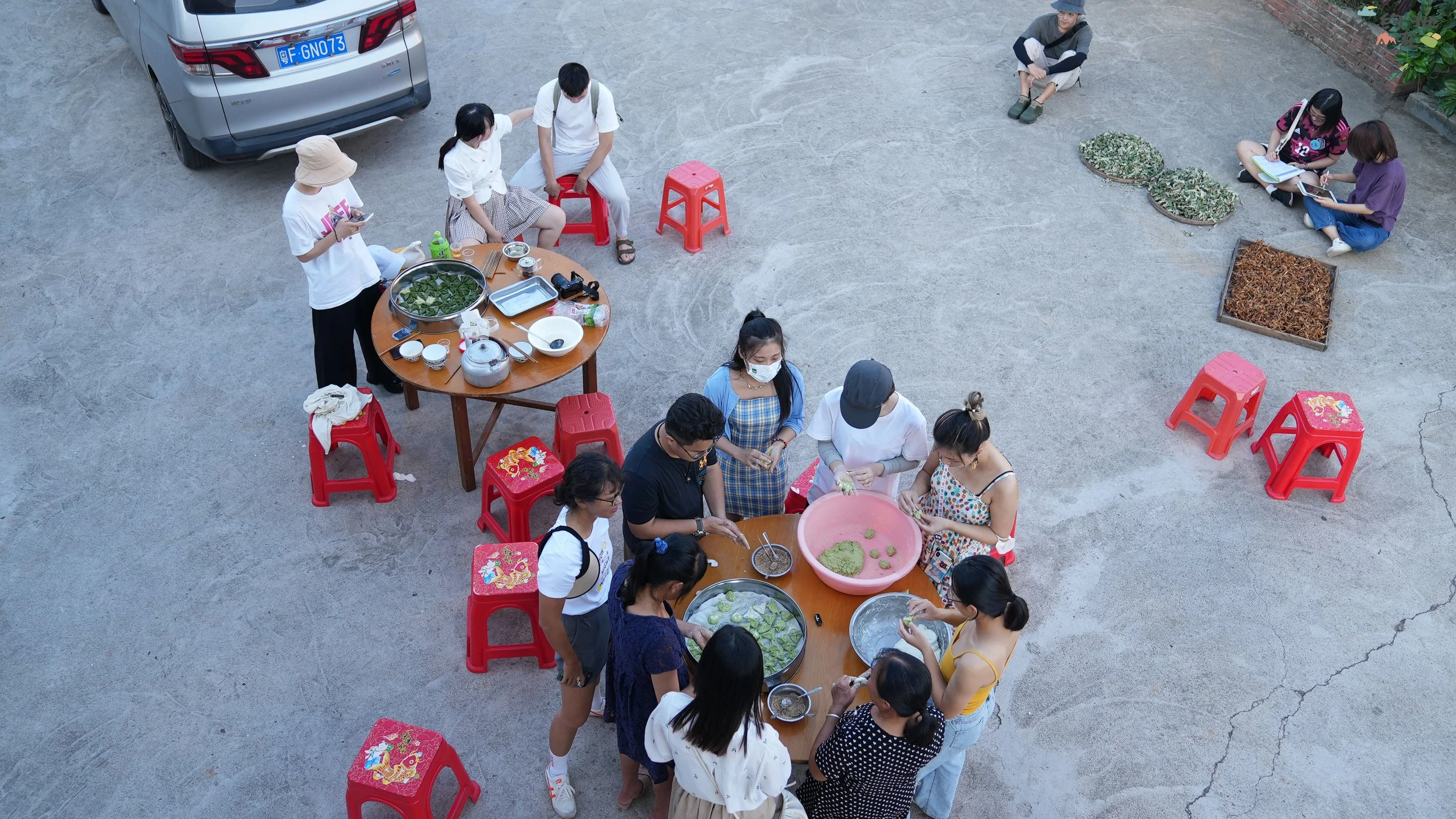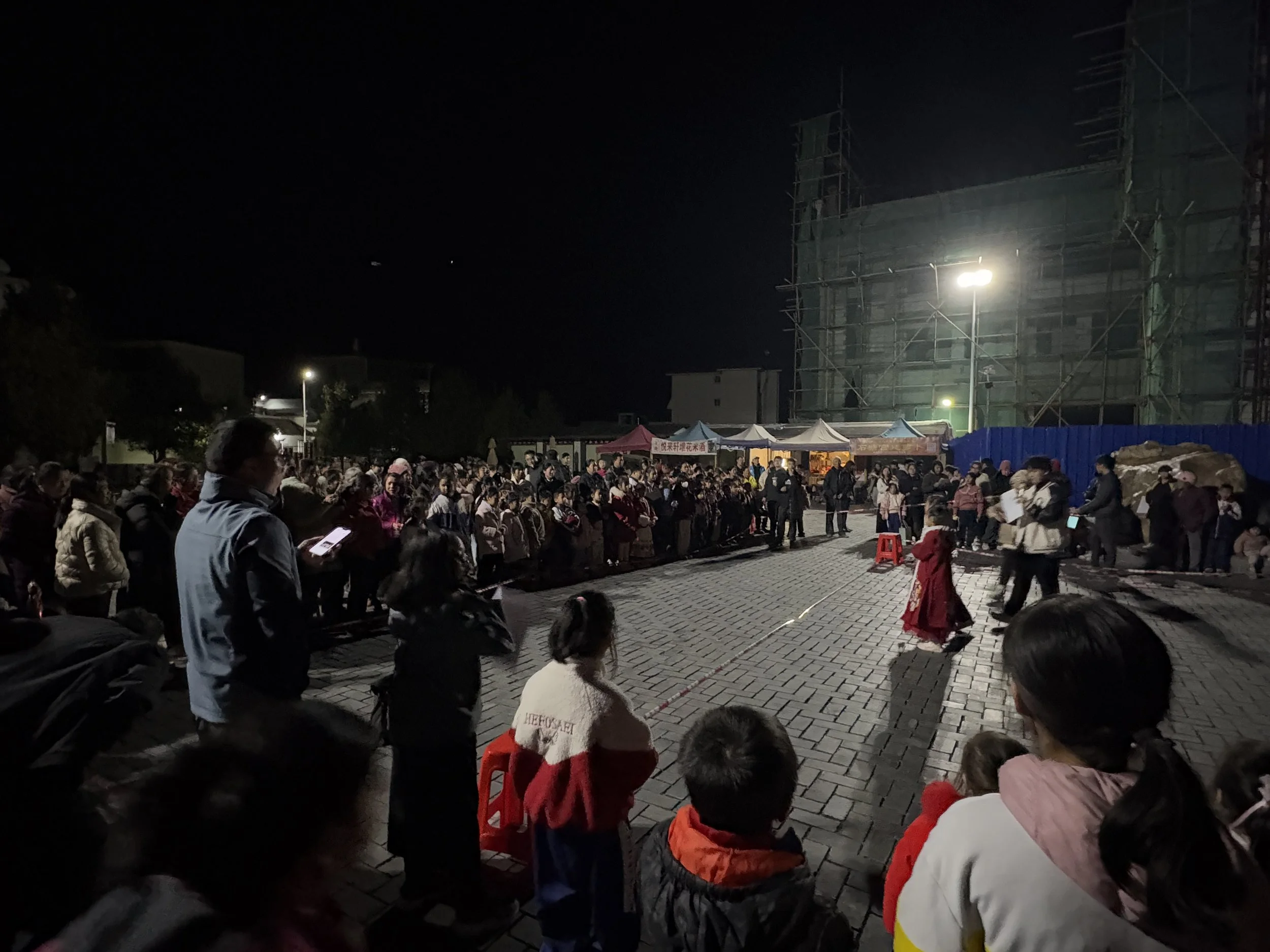Recreating first encounters
An awkward conversation
It's been 20 years since I first got involved with doing work in rural villages in China. Back then, I was a curious and naive third-year biology student at the University of Toronto. Having been born in a Chinese city and immigrating to Toronto at the age of 11, I was, in my dad's words, "half illiterate" in both Chinese and North American culture. That summer, I volunteered at a tiny village elementary school with more than a hundred children in Jiangxi Province, a place so small it was invisible to Google Maps, with a well for water and “medieval toilets”.
In these 20 years, both I and China’s villages have come a long way. I’ve had the chance to visit and work in many villages across the country, each visit a “first encounter” of its own. And almost every time I enter a village as a newcomer, I flash back to a moment from my first encounter with the village in Jiangxi.
The organizers of the volunteer program tried to prepare us for moments like that one before our tedious journey to the village. During training, I learned the importance of blending in as a principle of good social work, summarized by the slogan 同吃、同住、同劳动(“eating together, living together, working together”) from the campaign of sending intellectuals to live and work in rural villages during the Cultural Revolution. We were told to hide our “too American” clothes and expensive electronics. I was equally excited and confused about deliberately making changes to my “normal ways of being.” I was excited to experience unknown ways of living, yet confused about how much of my usual self I would need to shed.
My first volunteering trip to rural China, circa 2005.
The moment came in the first days after our group of 5 volunteers arrived. We were walking across the rice fields with teachers and parents to do home visits, chatting and answering curious questions: What language do people speak in the U.S.? Is everyone as tall as NBA stars? Did we really have to take a plane to get here?
Then someone asked about the cost of our plane tickets.
Without much thought, we casually shared how much we each spent on flights from the U.S., Canada, and Malaysia. Gasps rippled through the group as they did the math. “You spent that much just to bring some books to our school?” they asked, bewildered. We probably replied something like, “Well, we’re here to build a library and help children develop reading habits.” We probably added, “And that’s worth it!” hoping it would make sense.
But the moment left me deeply uncomfortable. Sharing how much we spent on plane tickets did exactly what we wanted to avoid: it highlighted the vast differences in our ways of living and turned our presence into a spectacle, overshadowing the connections we hoped to build. It felt as if, by exposing this detail unnecessarily, we had shifted attention away from the work we were there to do.
Staying professional
A few years later, when I decided to return to China to work in rural communities as a professional in social innovation, I often thought back to that plane ticket conversation. I decided that, in addition to “eating together, living together, working together,” it was equally important to refrain from exposing too much personal information, especially details about salary, where I studied and traveled, my views on marriage—anything that might stand out. These details were irrelevant in formal settings like meetings, interviews, or workshops anyway, since it was enough to attach my identity to the school, NGO, or village official who had invited me.
When curious aunties caught me in a casual moment and asked about my personal life, I developed a system of cherry-picking parts of my history that wouldn’t seem unusual. I would share the city where I was born (without mentioning the larger part of my upbringing in Canada), that I majored in biology (dropping the odd-sounding university name), that I was married (but never mentioning that I chose not to have children). Then I would gently steer the conversation back to why I was there, reminding the aunties that I was there to do research or design on a specific topic, and that chatting about my personal life wasn’t relevant or an effective use of time. "Today we focus on you, not me!" I would say.
Rhythms of the village
About six years into my work in China, I faced a challenge that made me reconsider only making dispersed short visits and exposing only a professional image. At the time, I was working in a social enterprise that aimed to convince smallholder rice farmers to replace chemical fertilizers with organic alternatives. After a pilot period, we discovered that many participating households were secretly adding chemical fertilizers, even though we provided the more expensive organic ones for free. I knew that investigating why they were breaching the agreement would only be effective if a trusting relationship was built beyond formal interactions. But how?
I decided to move into the village for eight months (two rice seasons).
Living in the village forced me to synch biologically with the circadian rhythm centered on rice farming, and rely on neighboring households for local knowledge. Being there also allowed me to step into where meetings actually happened—on random seats scattered in front of the village store; where information was exchanged—around the water basin where women did laundry together; and where smooth collaboration unfolded—during a funeral, for example. As I followed the men and women into their rice fields asking for advice on farming, and hung out in family living rooms after dinner while waiting for everyone’s favorite TV show to start, many conversations about family histories and worldviews were exchanged.
(Photos above capture over 10 years of friendship between Uncle Qing and I. Photo on the left was taken during the year I spent in his village in 2016, and the photo on the right was taken during our annual visit last year.)
One topic kept coming up: questions about my role as a daughter, wife, and mother (a role everyone in the village assumed I would eventually take on). I used to feel impatient with these questions, wanting my identity to be defined instead by my education, career, and the art galleries I visited. But the extended time I spent living in the rhythms of the village, getting to know families well enough that I could let myself into their living rooms when I needed to talk, changed how I felt about these questions. I began to understand that they did not come from a desire to pry into my personal life or to impose traditional expectations on a young woman. They came from a generational framework of how life is organized and passed down—a social logic deeply rooted in agrarian tradition and kinship ties. When this framework was extended to me, it was not an intrusion but an inclusion.*
A sociable designer?
For many years, I thought that building personal relationships in the rice-farming village had simply added a new dimension to my skill set—like gaining “street smarts” to complement my “school smarts.” But the tidy distinction between the two "smarts" began to blur when I came across a research article early in my PhD.
The article, by Cyril Tjahja and Joyce Yee, Being a Sociable Designer: Reimagining the Role of Designers in Social Innovation (Tjahja & Yee, 2022), argues that designers should intentionally build amicable social interactions prior to their usual focus on delivering design outcomes. The authors describe how, in being sociable, a designer operates from an intimacy-based worldview, recognizing that “people are interdependent on one another as well as their respective contexts” (ibid., p. 136). They further explain:
>“The intimacy approach is not a role that one adopts, as it is a way of being. The sociable designer therefore is someone who is able to transcend their professional role(s) and engages in reciprocal and mutual exchanges (Petrella, Yee, and Clarke 2020), by investing in the long-term relationships or friendships with those they engage with, even though there are no direct apparent benefits to be gained in the process.”
Reflecting on this, I began to ask myself: Could events like sharing life stories while cooking together be more than an incidental off-hours interaction—could it be an integral part of my design practice? And if so, how might I take down the wall I had intentionally built between “school” and “street,” or between “workshop” and “everyday collective life,” in my attempts to make my work in the village feel professional?
Building on the work of other temporary scholars, Tjahja and Yee (ibid. P. 145) summarized the following practical approaches for designers to become more sociable:
1. actively creating opportunities for social interaction in order to structure long-term relationships (Light and Akama 2014);
2. establishing relationships based on mutual learning and reciprocity (Petrella, Yee, and Clarke 2020);
3. strengthening social cohesion in neighbourhoods before initiating any type of intervention (Gullstrom and Kort 2019).
The next few times, when we had chances to organize co-design events in villages as newcomers, instead of going back to the library of game or card-based icebreakers we have accumulated over the years, I decided to try some new things.
A designated chill spot
In S Village, my team was invited by the village committee to organize a co-design workshop focused on improving the public gathering area around the village basketball court. Residents of all ages were welcome to drop by over three days, with a loose schedule that included some structured activities. We also intentionally set aside a spot under the giant bayan tree as a casual hangout area. It was a natural choice, since people already gathered there to rest, and the shaded area itself was part of what we hoped to redesign. The professional designers and design students on our team took turns chatting with whoever came over.
One afternoon, three women joined me as we sat on a few bricks under the tree, using them as makeshift seats. They asked if I was still a student or if I had started working. When I said I had already started working, they asked if I was married. I said yes, and added, “but with no children.” One of the women shared that after she got married and before having kids, she had left the village to work in a big coastal city. She worked hard for years, and now that her children were grown, she had finally returned to the serenity of rural life. Another woman chimed in, joking that her peace would end once she had grandchildren, and we all giggled as she insisted she would happily leave childcare to their mother in the city.
Our conversation bounced back and forth, from family relationships to memories they had with the bayan tree, and to their hopes for aging in the village. I realized, right there under that tree, that this time, as a newcomer, I hadn’t first shown up wearing a professional face, greeting people with game instructions in a carefully arranged workshop space. I showed up as a woman with whom a girl talk could break out naturally, and I learned so much more.
Recreating first encounters
Besides making first impressions intentionally more personable, we began to explore all kinds of ways to weave casual social encounters into our work in the village. Before I knew it, our practice started to look and feel very different.
Icebreakers began to happen the evening before formal workshops, taking the form of chats over tea and sunflower seeds on the basketball court.
We held backyard evening gatherings to test out rhymes we had protoyped to promote age-friendly house renovations.
Group discussions about local tourism took place while making sticky rice cakes together.
When we hoped parents and grandparents would support the safety and cleanliness of a new children’s park, we decided to hold an evening party there, letting everyone experience the space as a shared place of joy.
If our visits coincided with local festivals, we would join the celebrations, learning to make zongzi and other seasonal delicacies from the many aunts and grandmothers who generously taught us.
Dragon boat festival celebration in X Village.
And last year, when we discovered no plans were made for New Year’s Eve, we encouraged university student volunteers visiting from Hong Kong to co-organize a variety show with local social workers and children. The turnout was beyond what any of us expected.
S Village New Years Even variety show on Dec. 31, 2024.
This intentional shift in our practice meant that opportunities for social interaction—some designed for mutual learning, others simply to share a joyful time—became integral to our schedule. These less formal ways of engaging complement structured workshops in important ways.
They begin with what I, for now, call an anchor: a familiar, culturally resonant activity or object in village life that gently organizes social interaction, lowers barriers, and provides a sense of inclusion, such as sunflower seeds, shared cooking, or festive gatherings. These anchors create a gentle sense of order that puts people at ease, even when new faces or unfamiliar topics are introduced. For instance, an elderly grandmother who might struggle with our dialect can still find her place in a group cooking session.
Anchors and the loose signals they provide guide designers to follow the natural rhythms of village life. A naive professional designer might mindlessly schedule a workshop during office hours that clash with farm work, but she is more likely to schedule cooking and chatting over sunflower seeds at more appropriate times.
Finally, these everyday settings create a shared agency that we value in true collaboration. Topics shift as participants guide the conversation rather than follow a facilitator’s plan, fostering the type of emotional safety, humor, and genuine connection that fit my imagination of what the Austrian philosopher Ivan Illich would qualify as conviviality.
On a personal level, incorporating spaces for more genuine connection is not only a practice of becoming a sociable designer, they are also spaces for an individual experiment on how much of my version of reality, my life history, and my differences to show through. I am more comfortable letting my idiosyncrasies become visible, because I know I am first seen as any young woman hoping to share gossip over a bag of sunflower seeds or seeking to improve cooking skills. The cultural anchors also provided me with emotional safety. Sure, I still stand out in the villages, and I know this because people always tell me how much they remember a detail about me in subsequent encounters. But if anyone is interested in knowing more, please bring out some sunflower seeds.
In X village, we can trust in the power of the streamed glutenous rice cakes to bring people together.
Let our lifehistories guide us
Unfortunately, on a pragmatic level, bringing down the wall between what is professional and what is personal is not as simple as deciding to do so emotionally. Operating within modern social infrastructures means facing legal constraints that can exclude some community members (like a younger sibling who missed the insurance signup). We also find ourselves in ethical debates about what we can accept as gifts, or whether it is appropriate to stay for lunch at a local’s home after a work visit.
I do not believe there are perfect solutions or simple rules for these situations, and the debates will continue. But in learning to value “being personal,” I now see personal feelings and life history not as distractions, but as components, even guides, when making these decisions, alongside rational considerations.
If I could go back to that plane ticket conversation in 2005, I think instead of awkwardly changing the subject, I would work with the shock over the cost. I might share that as students, we chose to spend our summer volunteering because we so desperately wanted to learn how to respond to the world’s inequalities, but we have no idea on exactly how. I would add that, living abroad, we hadn’t had the chance to understand the realities of life in this village, and all we could think to do was to make up for that physical distance by flying ourselves here. And I would emphasize that it is precisely conversations like this—prompted by everyone’s reaction to the plane ticket cost—that reveal the shortcomings of our privilege and our ignorance about what it means to truly contribute to the school and the community. And I would invite everyone to start from here.
*The 8-months-long immersed investigation eventually led me to conclude that some participating households still added chemical fertilizers for 3 reasons: 1. Organic fertilizers were too heavy for carrying to paddies further away from people's houses, particularly for an aging group (I blogged about it here); 2. A distrust in organic fertilizers for producing the same yield; 3. Miscommunication between family members on the standards of farming, particularly when the same family only participated in our program with parts of their land.
References
Illich, I. (1973). Tools for conviviality. Harper & Row.
Tjahja, C., & Yee, J. (2022). Being a sociable designer: Reimagining the role of designers in social innovation. CoDesign, 18(1), 135–150. https://doi.org/10.1080/15710882.2021.2021244
